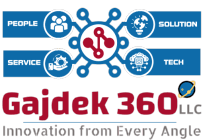This year’s Wimbledon Tennis Championships are not just a showcase for elite athleticism but also a high-profile test of Artificial Intelligence. For the first time in the tournament’s 148-year history, all line calls across its 18 courts are made entirely by Hawk-Eye Live, an AI-assisted system that has replaced human line judges. This follows, amongst others, the Semi-Assisted Offside System deployed in last year’s football Champions League after its success in the Qatar World Cup.
The promise? Faster decisions, greater consistency, and reduced human error.
The reality? Multiple malfunctions, public apologies, and growing mistrust among players and fans (not to mention losing the ‘best dressed officials’ in sport).
What Went Wrong?
- System Failure Mid-Match: During a high-stakes women’s singles match between Anastasia Pavlyuchenkova and Sonay Kartal, the line-calling system was accidentally switched off for several points. No alerts were raised, and the match proceeded with no accurate judgments. Wimbledon officials later admitted human error was to blame, not the AI.
- Misclassification Errors: In the men’s quarter-final between Taylor Fritz and Karen Khachanov, Hawk-Eye incorrectly called a rally forehand a “fault,” apparently confusing it with a serve. Play was halted and the point was replayed, leaving fans and players confused and frustrated.
- User Experience Failures: Multiple players, including Emma Raducanu and Jack Draper, complained that some calls were “clearly wrong” and that the system’s announcements were too quiet to hear amid crowd noise. Some players called for the return of human line judges, citing a lack of trust in the technology.
Lessons for AI and IG Professionals
Wimbledon’s AI hiccup offers more than a headline; it surfaces deep issues around trust, oversight, and operational design that are relevant to any AI deployment in the workplace. Here are the key lessons:
1. Automation ≠ Autonomy
The Wimbledon system is not truly autonomous; it relies on human operators to activate it before each match. When staff forgot to do so, the AI didn’t intervene or alert anyone. This exposes a major pitfall: automated systems are only as reliable as their orchestration layers.
Governance Principle: Ensure clear workflows and audit trails around when and how AI systems are initiated, paused, or overridden. Build in fail-safe triggers and status checks to prevent silent failures.
2. Build in Redundancy and Exception Handling
AI systems excel at pattern recognition in controlled environments but can fail spectacularly at edge cases. Wimbledon’s AI was likely trained on thousands of hours of ball trajectories – but it still confused a forehand rally shot with a serve under unusual conditions.
Governance Principle: Plan for edge case management. When the AI encounters uncertainty, it should either defer to human review or trigger a fallback protocol.
3. Usability is a Core Component of Accuracy
Even when the AI was functioning correctly, players couldn’t always hear the line calls due to low audio volume. What good is a precise call if the user can’t perceive it?
Governance Principle: Don’t separate accuracy from usability. A technically correct output must be understandable, accessible, and actionable to its end users. Invest in UI/UX design early in the AI lifecycle.
4. Transparency Builds Trust
Wimbledon’s initial response (vague statements and slow clarifications) only fuelled player frustration. Trust was eroded not just because of the error, but because of how it was handled.
Governance Principle: When deploying AI, especially in high-stakes environments, build a culture of transparent accountability. Log decisions, explain anomalies, and communicate clearly when things go wrong.
5. Hybrid Systems Are Often More Effective Than Pure AI
While Wimbledon has fully replaced line judges with AI, there’s a strong case for a hybrid model. A combination of automated systems with empowered human oversight could preserve both accuracy and human judgment.
Governance Principle: Consider augmented intelligence models, where AI supports rather than replaces human decision-makers. This ensures operational continuity and enables learning from both machine and human feedback.
6. Respect Context and Culture
Wimbledon isn’t just any tournament; it’s steeped in tradition, where human line judges are part of the spectacle. Removing them altered the tournament’s character, sparking emotional backlash from players and spectators alike.
Governance Principle: Understand the organisational and cultural context where AI is deployed. Technology doesn’t operate in a vacuum. Change management, stakeholder engagement, and empathy are as important as algorithms.
The problems with Wimbledon’s AI line-calling system are symptoms of incomplete design thinking. Whether you’re deploying AI in HR analytics, document classification, or customer service, the Wimbledon experience shows that trust isn’t just built on data; it’s built on reliability, clarity, and human-centred design.
In a world increasingly mediated by automation, we must remember: AI doesn’t replace the need for governance. It raises the stakes for getting it right. And we just wish it was around for the “Hand of God” goal!
Are you looking to enhance your career with an AI governance qualification? Our AI Governance Practitioner Certificate is designed to equip compliance professionals with the essential knowledge and skills to navigate this transformative technology while upholding the highest standards of data protection and information governance. The first course was fully booked, and we have added more dates.




0 Comments